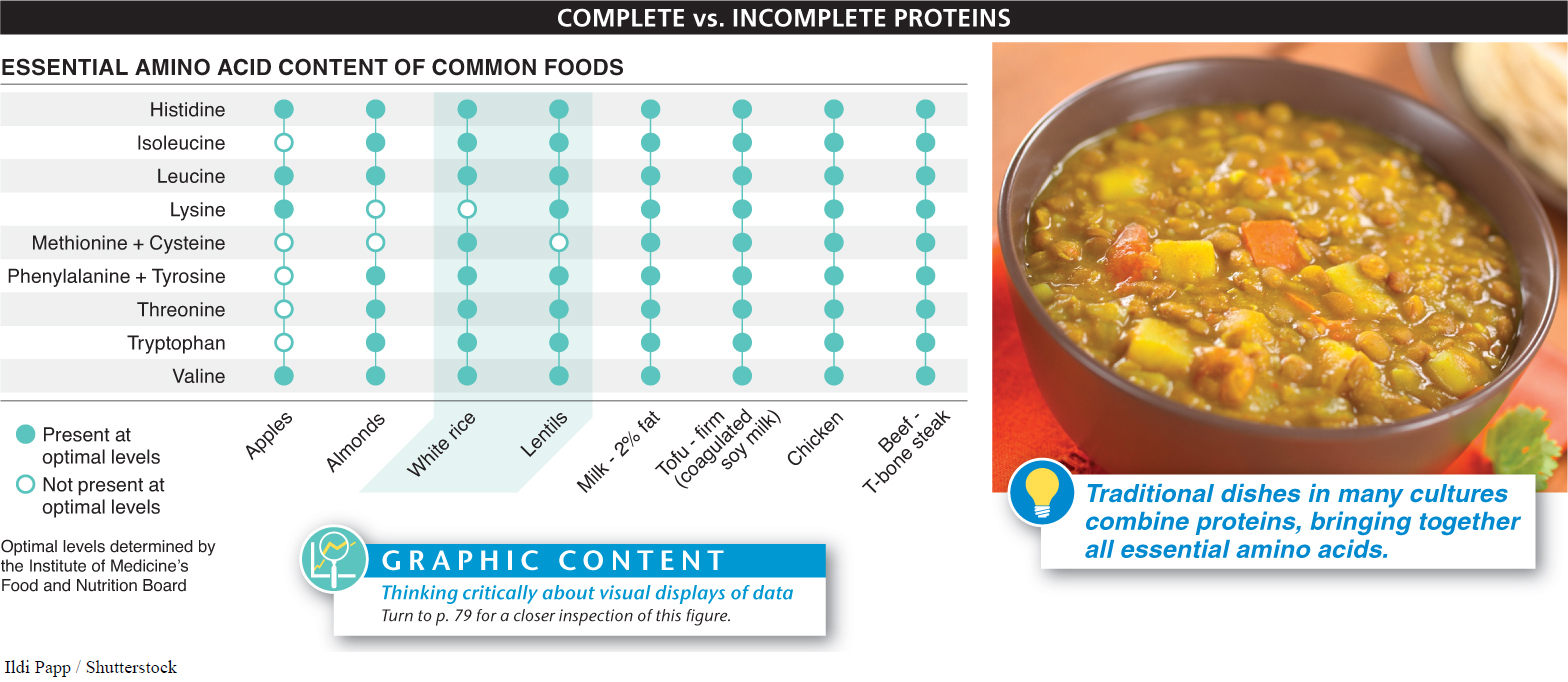The atoms present in the proteins we eat—
69
The amount of protein we need depends on the extent of the building projects under way. Most individuals need 40–
Contrary to the impression you might get from food labels, all proteins are not created equal. Every different protein has a different composition of amino acids. And while our bodies can manufacture certain amino acids as they are needed, many other amino acids must come from our diet. Those that we must get from our diet—
Food labels indicate how many grams of protein are contained in a food item. Why is this information only partially helpful for effectively guiding your protein intake?
Many foods, containing “complete proteins,” have all of the essential amino acids. Animal products such as milk, eggs, fish, chicken, and beef tend to provide complete proteins. Vegetables, fruits, and grains often contain “incomplete proteins,” which do not have all the essential amino acids. If you consume only one type of incomplete protein in your diet, you may be deficient in one or more of the essential amino acids. But two incomplete proteins that are “complementary proteins,” when eaten together, can provide all the essential amino acids.
Traditional dishes in many cultures often include such pairings. Examples are corn and beans in Mexico and rice and lentils in India (FIGURE 2-38).

TAKE-HOME MESSAGE 2.16
Twenty amino acids make up all the proteins necessary for growth, repair, and replacement of tissue in living organisms. Of these amino acids, about half are essential for humans: they cannot be synthesized by the body so must be consumed in the diet. Complete proteins contain all essential amino acids, while incomplete proteins do not.
If all twenty amino acids are necessary for proteins, then why are only about half of them called “essential”?
The essential amino acids are the ones that human cannot manufacture, so it is essential that they are supplied in our diet.
70